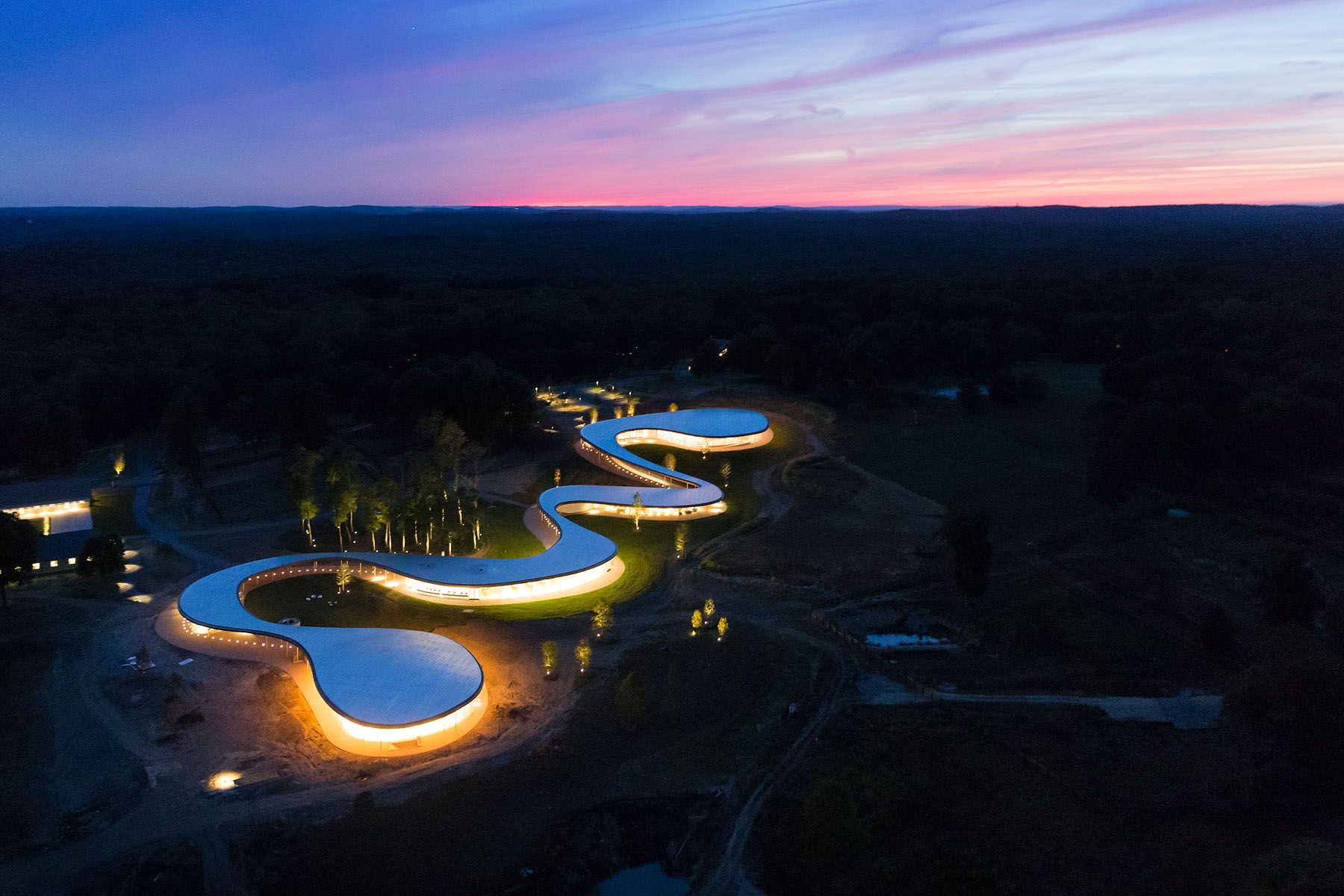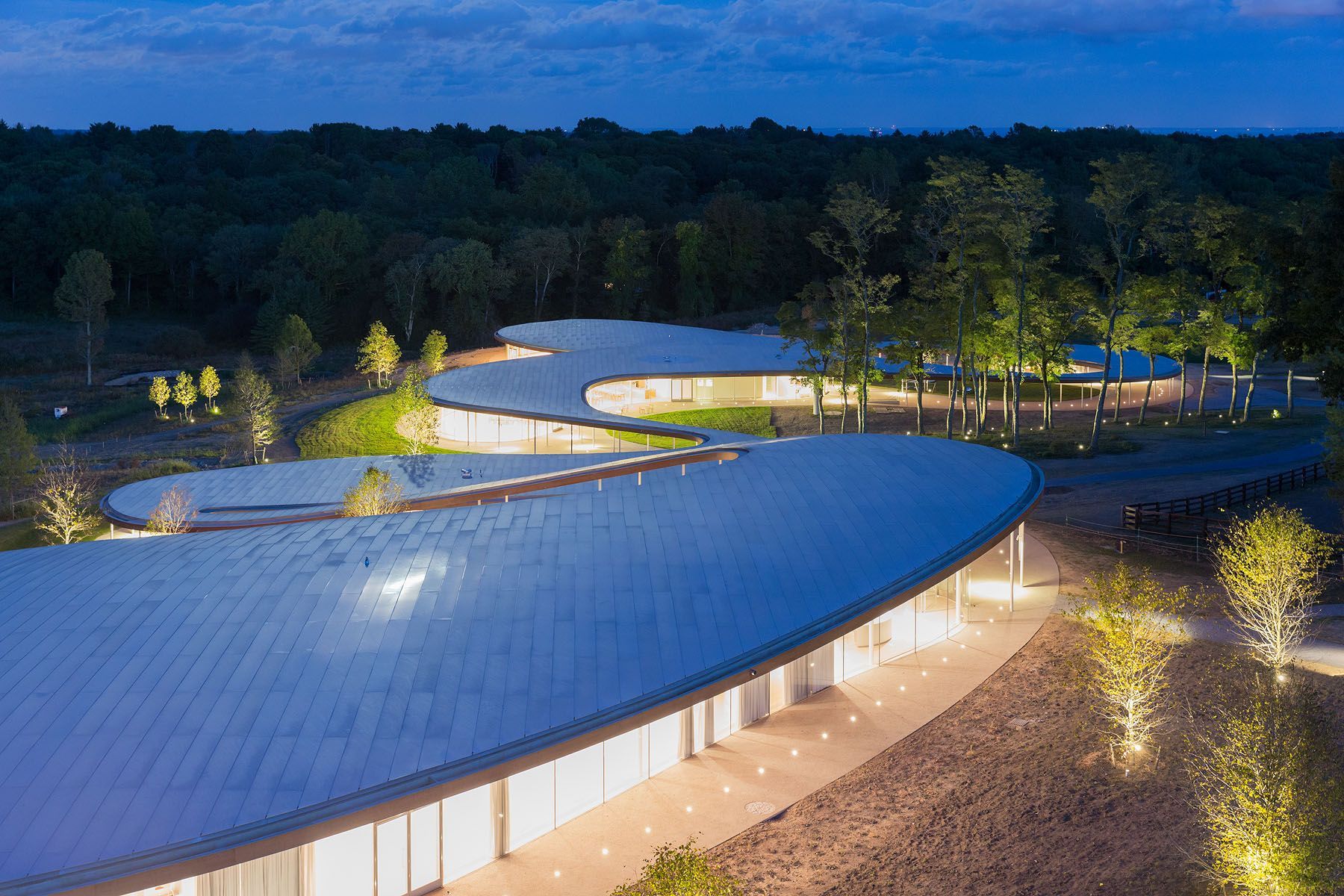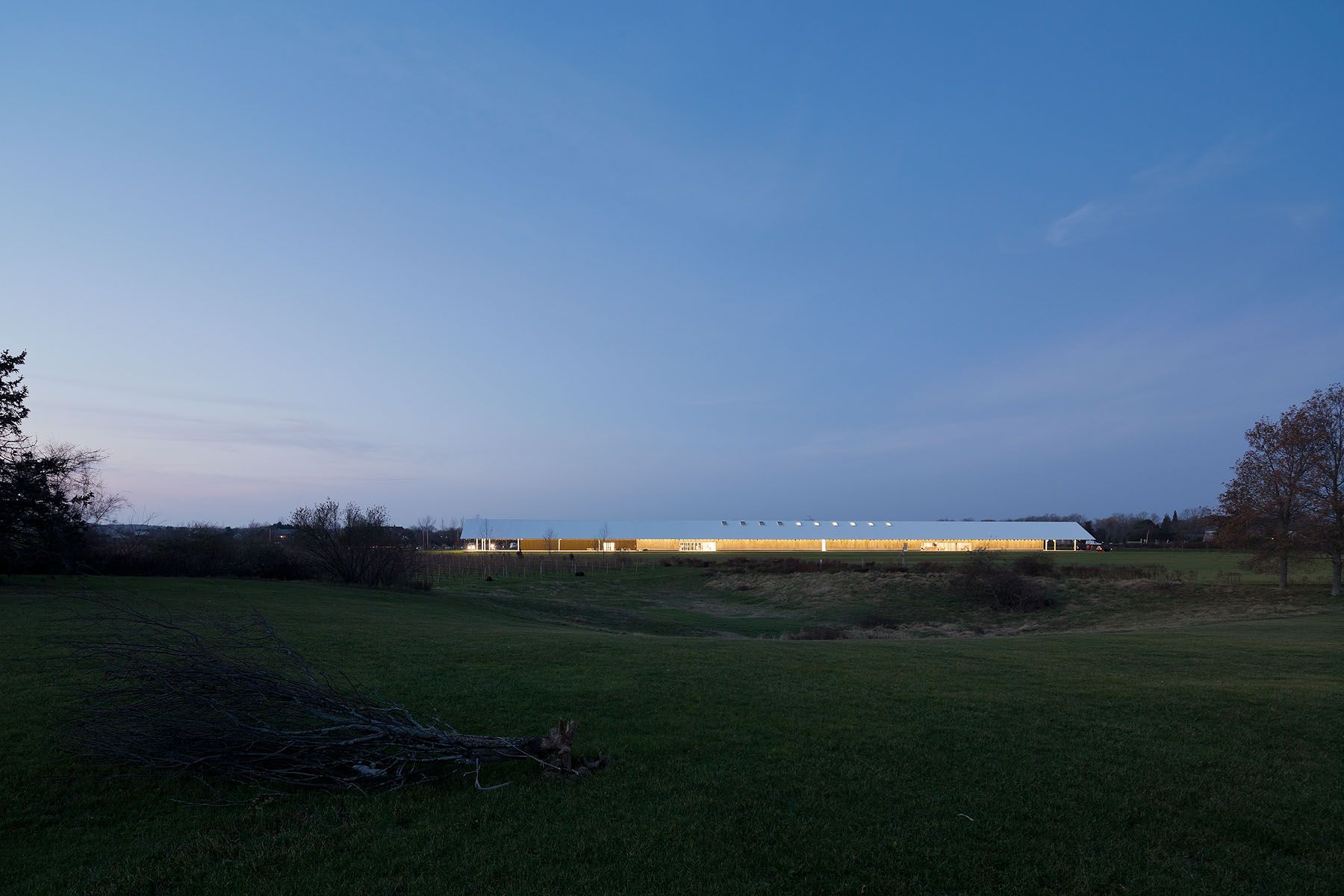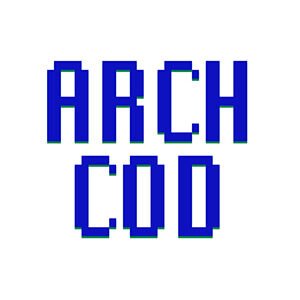All Aglow: Photographing Rural Art and Architecture at Night
Send us a photo. Tell us a story. Win $2,500! Architizer’s 3rd Annual One Photo Challenge is underway with a Late Entry Deadline on July 15, 2022! Start your entry for architecture’s biggest photography competition here.
Light shapes how we experience architecture and design. While buildings and structures are often photographed during the day, nighttime photography relies on similar techniques and motion to create powerful stories. Experimenting with different camera settings and equipment, photographers work with slow shutter speeds, long exposure times or white color balance to capture the perfect shot. Giving themselves time to test ideas, they scout their locations and take advantage of relatively stable light conditions compared to daytime shoots.
The key to shooting buildings at night is understanding how to harness low light to your advantage. Architectural photographers make sure there is enough light coming from the building or on it so that the camera can register what’s there. In turn, they also find ways to use light in defining the shape of things or the scale of spaces and structures. Taking a look at the work of different photographers through the lens of nighttime images, the following projects illustrate how lighting can dramatically change both our experience and perception of architecture. In turn, they represent a range of techniques for telling the story of architecture through movement, space and form.
Iwan Baan

 Grace Farms by SANAA, New Canaan, Conn., United States
Grace Farms by SANAA, New Canaan, Conn., United States
The River Building at Grace Farms is a new cultural and community center with five programmatic initiatives in New Canaan, Connecticut. Comprised of a multipurpose building and 80 surrounding acres, Grace Farms is an open space for people to experience nature, encounter the arts, and explore meaning. The building blends into its natural surroundings, minimally impacting views across what was formerly gently sloping farmland. The 83,000 sf building is a complex of glass-walled volumes — a sanctuary for contemplation, a library with more than 1,400 volumes, a community space with fresh food and beverage, a pavilion with tea served daily, and a partially sunken gymnasium for recreation and performances – connected by a sloping, winding roof.
Florian Holzherr

 Museum of Outdoor Arts Element House by MOS Architects, N.M., United States
Museum of Outdoor Arts Element House by MOS Architects, N.M., United States
MOS designed the Museum of Outdoor Arts Element House was a structural insulated panel (SIPS) modular building to operate independently of public utilities by integrating passive systems and on-site energy-generation. The house functions as a guest house and visitor center for Star Axis, a nearby land art project by the artist Charles Ross in New Mexico. Using simple sustainable building practices to increase environmental performance, everything is stripped down to basic components. The organization of the house is based on an expansive geometric system of growth, radiating and aggregating outward, one module after another.
Mikael Pauli

 Galleri Örsta by Claesson Koivisto Rune, Kumla, Sweden
Galleri Örsta by Claesson Koivisto Rune, Kumla, Sweden
The design team created this new gallery building as a ‘hamlet’ with the adjacent old farmhouses and the owners’ house, together representing three centuries of building tradition. Positioned on top of an artificial hill, as a buffer to the site’s moist soil, the base of the building follows the hill’s topology. The resulting series of curves at the building’s base, combined with mirroring curves in the rooflines, makes the planar facades seem curved. The exterior facades have been painted white and, while still wet, three tons of special reflective glass beads were applied. The glass bead treatment, developed by artist Mikael Pauli, works in a similar way to the reflective component in zebra crossings. If viewed from the same angle as the incident light source, it glows as if lit from within.
Christian Burmester

 Remisenpavillon by Wirth Architekten, Affinghausen, Germany
Remisenpavillon by Wirth Architekten, Affinghausen, Germany
The Remisenpavillon was a design made to complement a typical old farm ensemble in the region of Lower Saxony, Germany. It takes up and continues the existing building lines respecting the traditions of scale and building materials. The new pavilion forms a new vertex of the group of farm buildings and now generates the first impression upon approaching the farm.
From afar, the pavilion appears as a closed, massive cube. Depending on the season, the new pavilion is used for storing and chopping of firewood, as a parking space for a tractor and agricultural implements for grassland maintenance, for parking cars, and in the summer, when the room is empty, as a garden loggia for receptions. The bricks for the building were recovered from the fire ruins of a nearby traditional farm house.
Marc Goodwin

 Micr-O Hangzhou by Superimpose Architecture, Hangzhou, China
Micr-O Hangzhou by Superimpose Architecture, Hangzhou, China
The Sun Commune is a local initiative raising awareness of sustainable farming and promoting healthy living and outdoor activities for the increasing urbanization of China. Located inside the rural Tai Yang Valley, West of Hangzhou, Superimpose Architecture Studio designed MICR-O to be a learning platform for city dwellers. The central outdoor patio creates an enclosed platform to host learning activities and events.
The white canvas ‘ring’ houses camping accommodation subdivided into segments by the three entrance points. The external corridor blends with the surrounding bamboo forest and offers an alternative circulation route while activities are happening in the central patio. The structure is elevated, keeping the ground nearly untouched. The structural A frame, a ninety-degree angled triangle, gives the design an externally pure shape, while internally the patio opens towards the sky and surroundings.
Iwan Baan

 Parrish Art Museum by Herzog & de Meuron, Water Mill, N.Y., United States
Parrish Art Museum by Herzog & de Meuron, Water Mill, N.Y., United States
The new Parrish Art Museum is located in the East End of Long Island. The design team set the basic parameters for a single gallery space by distilling the studio’s proportions and adopting its simple house section with north-facing skylights. Two of these model galleries form wings around a central circulation spine that is then bracketed by two porches to form the basis of a straightforward building extrusion. The floor plan of this extrusion is a direct translation of the ideal functional layout. A cluster of ten galleries defines the heart of the museum. The size and proportion of these galleries can be easily adapted by re-arranging partition walls within the given structural grid.
Send us a photo. Tell us a story. Win $2,500! Architizer’s 3rd Annual One Photo Challenge is underway with a Late Entry Deadline on July 15, 2022! Start your entry for architecture’s biggest photography competition here.
